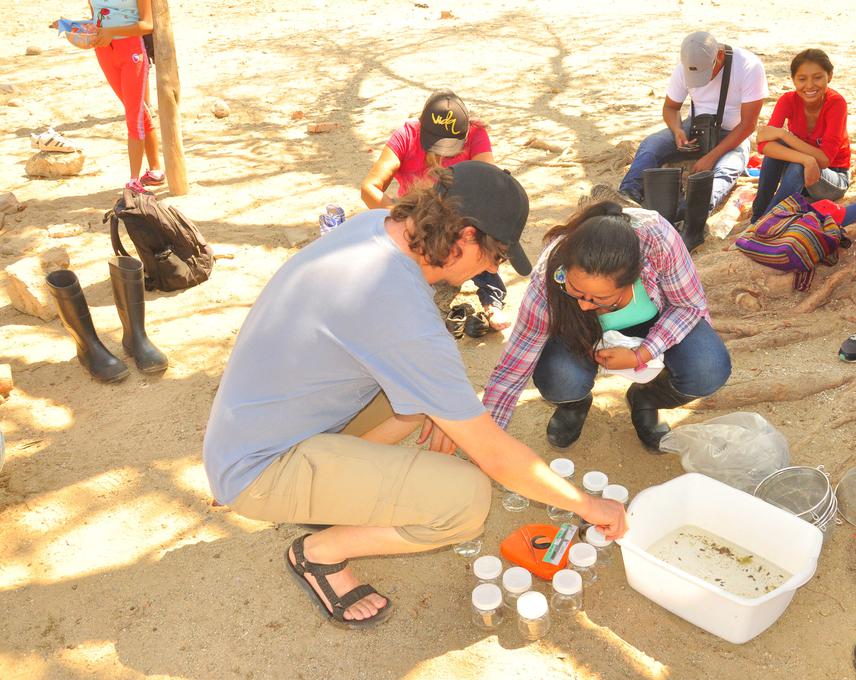Gloria Molina Gaytán
Water pollution continues growing in a large number of rivers in Oaxaca's central region. This problem has a strong impact on habitat loss and biodiversity as well as problems like public health and water safety.
Aquatic macroinvertebrates are an excellent indicator group to evaluate water quality. However, in Mexico this practice is incipient. Therefore, the main goals of this project are:
1) To determine water quality in different rivers of the Atoyac sub-basin using aquatic macroinvertebrates;
2) To analyze the patterns of diversity, abundance, and composition of macroinvertebrates associated with rivers in a pollution gradient;
3) To establish a participatory monitoring program for the water quality control of the Atoyac sub-basin; and
4) To carry out environmental education activities for students from local high schools. It will be focused on the investigation of knowledge, attitudes, and values that students have on macroinvertebrates and aquatic ecosystems as well as to teach them about these topics.

Macroinvertebrates collected.
Water pollution continues growing in a large number of rivers, such as the Atoyac River. This problem has a strong environmental impact on the loss of biodiversity and natural habitats.
Aquatic macroinvertebrate monitoring is an excellent tool to evaluate the health and pollution of rivers. In the USA, Canada, and European countries, water quality monitoring using aquatic macroinvertebrates is a common practice, legally supported. However, in Mexico, the standards to use macroinvertebrates as indicator organisms are incipient, and although there is a Mexican Standard, the NMX-AA-159-SCFI-2012, its application is not mandatory.
Despite Oaxaca is one of the most biodiverse states of Mexico, its freshwater fauna is poorly known. There is no information about macroinvertebrate species that inhabit the rivers. We do not know what are the indicator groups and their potential to determine water quality.
On the other hand, most rivers in forest areas have a low degree of contamination. Hence, some communities receive payments for the Hydrological Services, so they have the obligation to monitor and evaluate water quality on a regular basis. Therefore, monitoring with macroinvertebrate is a good tool to do it. In addition, many of these clean rivers are tributaries to the Atoyac River, so water becomes contaminated when mixed, thus revealing an inadequate water management.
The present study will lay the foundations for developing a monitoring system with macroinvertebrates to measure water quality; either for biodiversity conservation, or water restoration. Additionally, the study will contribute to the knowledge of the macroinvertebrate diversity (data unknown to date but they are a critical element in developing a conservation strategy); to establish an inventory of macroinvertebrates adapted to an index to determine water quality, in a contamination gradient, among other objectives focused to participatory monitoring and environmental education.
This project will develop feasible strategies to monitor the pollution levels in rivers of the Atoyac sub-basin, applying biomonitoring, participatory monitoring, and environmental education programs, in order to promote academic, citizen and governmental participation and co-responsibility to contribute to an Integrated Water Resources Management and biodiversity conservation.